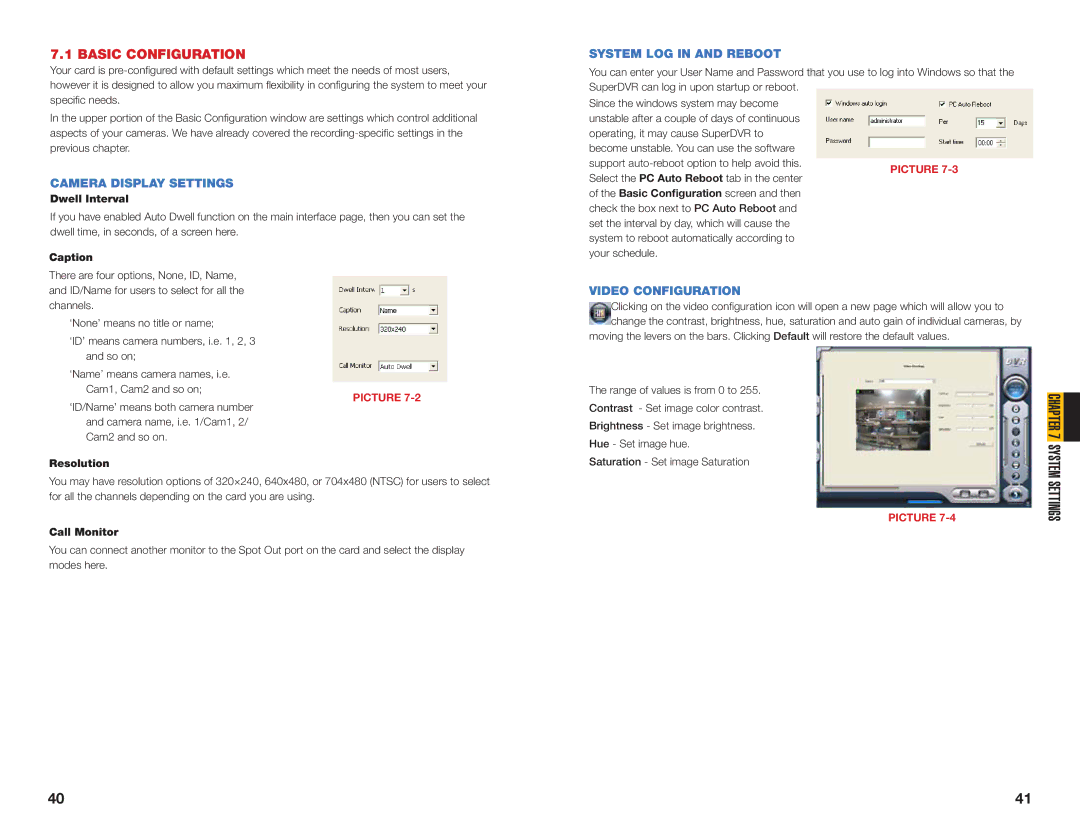
7.1 BASIC CONFIGURATION
Your card is
In the upper portion of the Basic Configuration window are settings which control additional aspects of your cameras. We have already covered the
CAMERA DISPLAY SETTINGS
Dwell Interval
If you have enabled Auto Dwell function on the main interface page, then you can set the dwell time, in seconds, of a screen here.
Caption
There are four options, None, ID, Name, and ID/Name for users to select for all the channels.
‘None’ means no title or name;
‘ID’ means camera numbers, i.e. 1, 2, 3 and so on;
‘Name’ means camera names, i.e. Cam1, Cam2 and so on;
PICTURE 7-2
‘ID/Name’ means both camera number and camera name, i.e. 1/Cam1, 2/ Cam2 and so on.
Resolution
You may have resolution options of 320×240, 640x480, or 704x480 (NTSC) for users to select for all the channels depending on the card you are using.
Call Monitor
You can connect another monitor to the Spot Out port on the card and select the display modes here.
SYSTEM LOG IN AND REBOOT
You can enter your User Name and Password that you use to log into Windows so that the SuperDVR can log in upon startup or reboot.
Since the windows system may become unstable after a couple of days of continuous operating, it may cause SuperDVR to become unstable. You can use the software support
VIDEO CONFIGURATION
Clicking on the video configuration icon will open a new page which will allow you to change the contrast, brightness, hue, saturation and auto gain of individual cameras, by
moving the levers on the bars. Clicking Default will restore the default values.
The range of values is from 0 to 255.
Contrast - Set image color contrast.
Brightness - Set image brightness.
Hue - Set image hue.
Saturation - Set image Saturation
PICTURE 7-4
CHAPTER 7 SYSTEM SETTINGS
40 | 41 |
